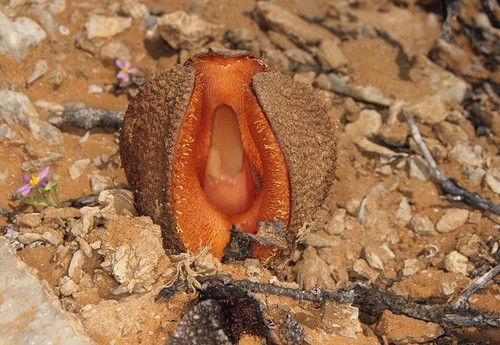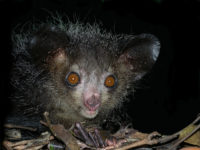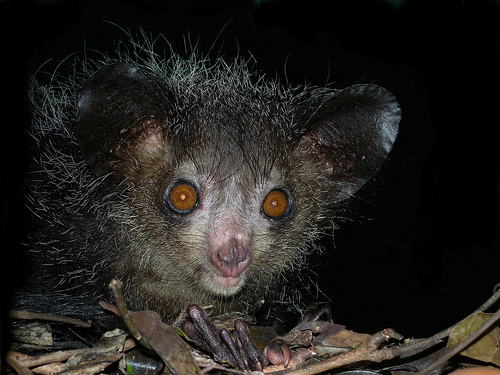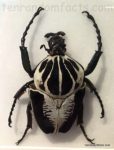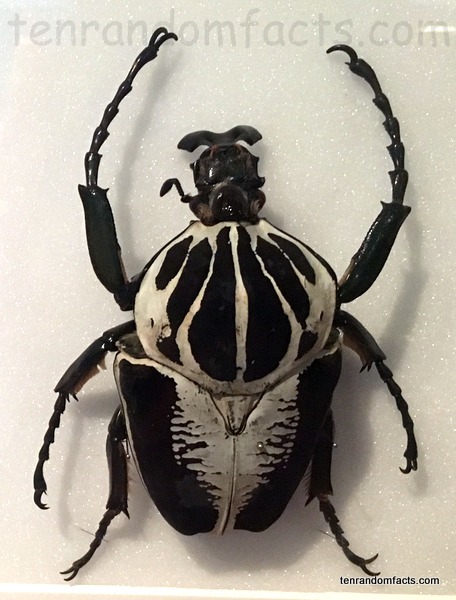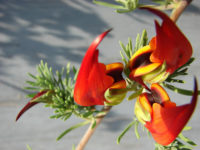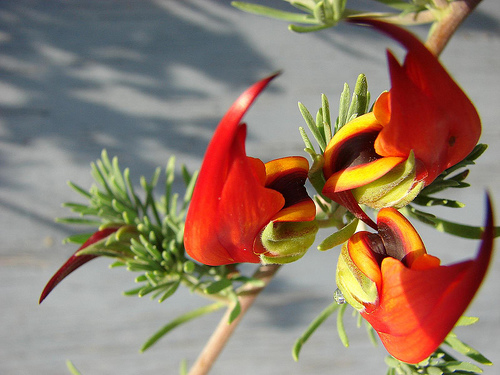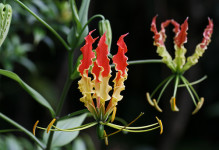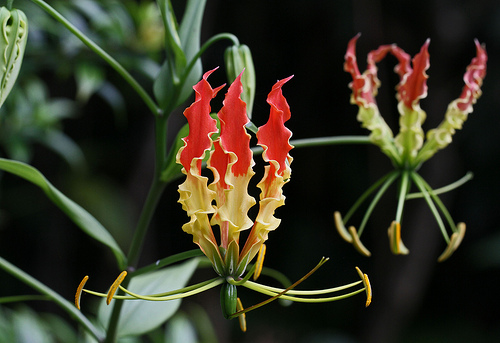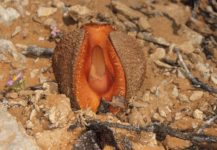
Jakkalskos have their own unique way of getting things done.
- Jakkalskos is a species of parasitic, leafless plant, native to areas mostly in the south of the African continent.
- ‘Jakkalskos’ is an Afrikaans term for the plant, which is also known as ‘bobbejaankos’ in Afrikaans, with respective literal meanings ‘jackal food’ and ‘baboon food’ in English.
- The scientific name of the jakkalskos is Hydnora africana and it is from the family Hydnoraceae, a family of parasitic plants that flower.
- Jakkalskos plants lack an above ground stem and develop almost entirely in the soil, only bursting forth from the ground to reveal their bloom once ample rain has occurred.
- When mature, the height of the jakkalskos plant above ground, is simply the size of the flower, which typically grows to be 10 to 15 centimetres (4 to 6 inches) tall.
A Jakkalskos Flower
Image courtesy of Derek Keats/Flickr
- The bloom colour of a jakkalskos ranges from orange to pink or red, while the plant’s outer body is brown to black in colour, depending on the age of the flower.
- Jakkalskos flowers emit a pungent smell, comparable to that of animal waste, which allures its pollinators, mostly carrion and dung beetles.
- As a parasite, the jakkalskos plant’s thick root-like system will attach itself to the roots of a host plant of the Euphorbia genus, from which it leeches the other plant’s nutrients.
- Filaments connect the sepals of the jakkalskos flower before it fully opens, and these serve as an obstacle to somewhat trap a beetle inside the flower to cause effective pollination, and once the flower develops and opens, the beetle is released.
- After flowering, a jakkalskos plant usually produces a fruit in the soil, up to 8 cm (3 inches) in diameter, that contains roughly 20,000 seeds, and the fruit is edible and commonly eaten by some animals including jackals and baboons.
Bibliography:
Grant A, Hydnora Africana Plant Info – What Is Hydnora Africana, 2016, Gardening Know How, http://www.gardeningknowhow.com/ornamental/flowers/hydnora/hydnora-africana-plant-info.htm
Hydnora Africana, 2016, Wikipedia, https://en.wikipedia.org/wiki/Hydnora_africana
Hydnora Africana, n.d, Botanical Society of America, http://botany.org/Parasitic_Plants/Hydnora_africana.php
Voigt W, Hydrona Africana, 2008, South African National Biodiversity Institute, http://www.plantzafrica.com/planthij/hydnorafric.htm





